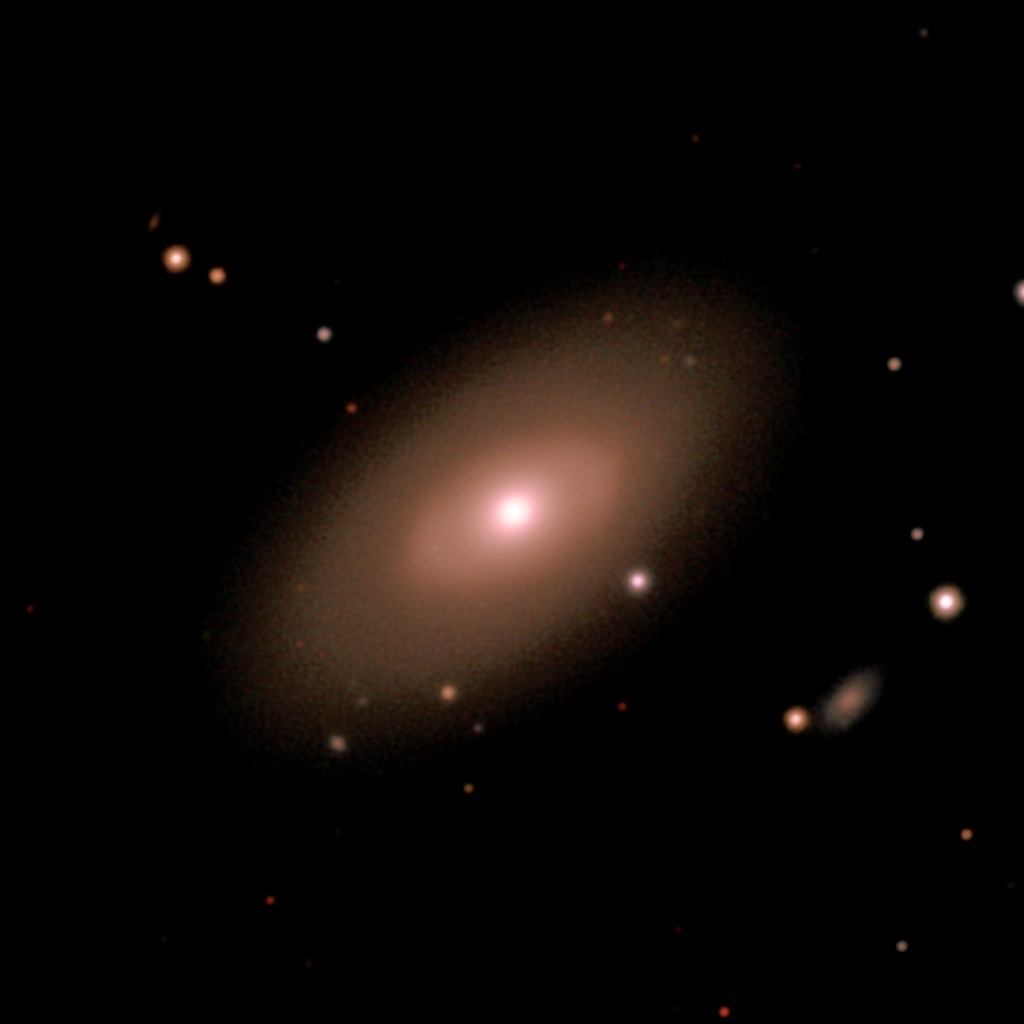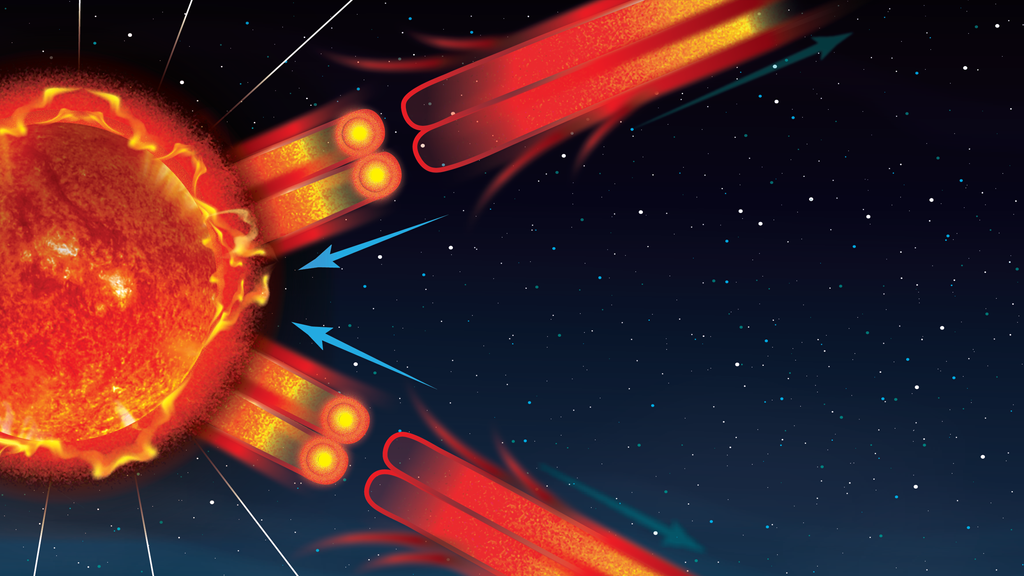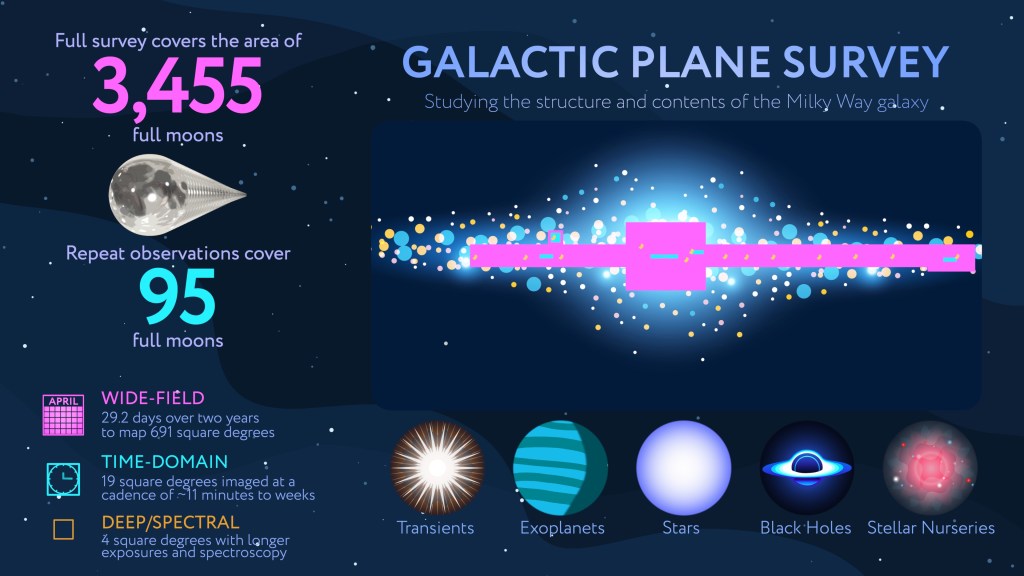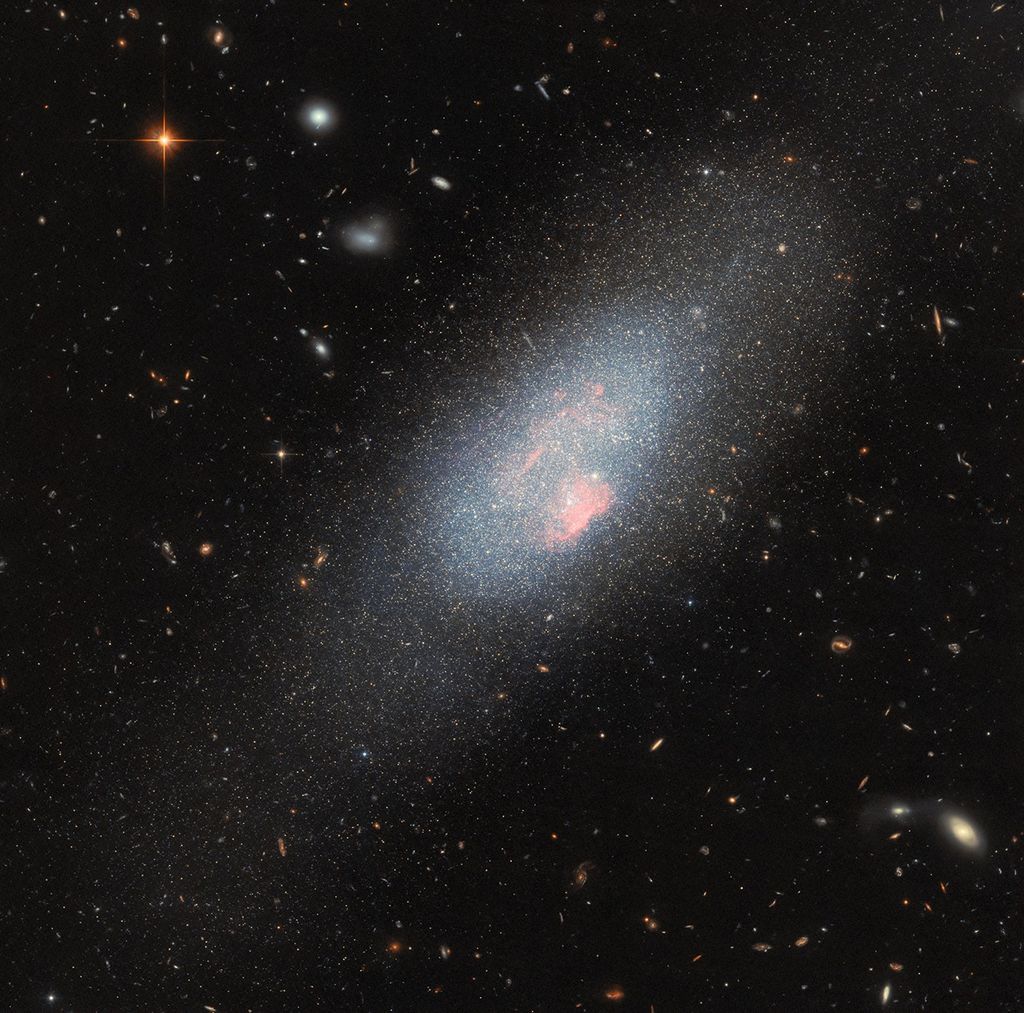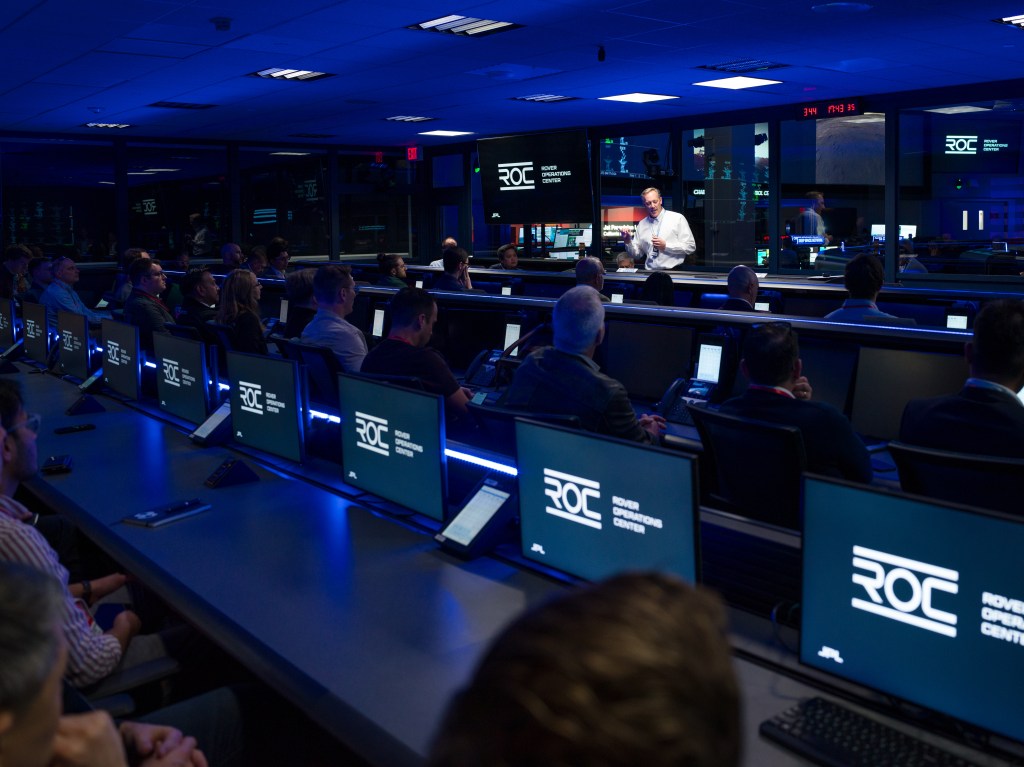1 min read
Planetary Nebula NGC 7027: A Sun-Like Star Burning Out

The Hubble Space Telescope's Near Infrared Camera and Multi-Object Spectrometer (NICMOS) has captured a glimpse of a brief stage in the burnout of NGC 7027, a medium-mass star like our sun. The infrared image (on the left) shows a young planetary nebula in a state of rapid transition. This image alone reveals important new information. When astronomers combine this photo with an earlier image taken in visible light, they have a more complete picture of the final stages of star life.
NGC 7027 is going through spectacular death throes as it evolves into what astronomers call a "planetary nebula." The term planetary nebula came about not because of any real association with planets, but because in early telescopes these objects resembled the disks of planets.
A star can become a planetary nebula after it depletes its nuclear fuel - hydrogen and helium - and begins puffing away layers of material. The material settles into a wind of gas and dust blowing away from the dying star. This NICMOS image captures the young planetary nebula in the middle of a very short evolutionary phase, lasting perhaps less than 1,000 years. During this phase, intense ultraviolet radiation from the central star lights up a region of gas surrounding it. (This gas is glowing brightly because it has been made very hot by the star's intense ultraviolet radiation.) Encircling this hot gas is a cloud of dust and cool molecular hydrogen gas that can only be seen by an infrared camera. The molecular gas is being destroyed by ultraviolet light from the central star.
The Infrared View - The composite color image of NGC 7027 (on the left) is among the first data of a planetary nebula taken with NICMOS. This picture is actually composed of three separate images taken at different wavelengths. The red color represents cool molecular hydrogen gas, the most abundant gas in the universe.
The image reveals the central star, which is difficult to see in images taken with visible light. Surrounding it is an elongated region of gas and dust cast off by the star. This gas (appearing as white) has a temperature of several tens of thousands of degrees Fahrenheit. The object has two "cones" of cool molecular hydrogen gas (the red material) glowing in the infrared. The gas has been energized by ultraviolet light from the star - a process known as fluorescence. Most of the material shed by the star remains outside of the bright regions. It is invisible in this image because the layers of material in and near the bright regions are still shielding it from the central star's intense radiation.
NGC 7027 is one of the smallest objects of its kind to be imaged by the Hubble telescope. However, the region seen here is approximately 14,000 times the average distance between Earth and the sun.
The Infrared and Visible Light View - This visible and infrared light picture of NGC 7027 (on the right) provides a more complete view of how this planetary nebula is being shaped, revealing steps in its evolution.
This image is composed of three exposures, one from the Wide Field and Planetary Camera 2 (WFPC2) and two from NICMOS. The blue represents the WFPC2 image; the green and red, NICMOS exposures. The white is emission from the hot gas surrounding the central star; the red and pink represent emission from cool molecular hydrogen gas. In effect, the colors represent the three layers in the material ejected by the dying star. Each layer depicts a change in temperature, beginning with a hot, bright central region, continuing with a thin boundary zone where molecular hydrogen gas is glowing and being destroyed, and ending with a cool, blue outer region of molecular gas and dust.
NICMOS has allowed astronomers to clearly see the transition layer from hot, glowing atomic gas to cold molecular gas. The origin of the newly seen filamentary structures is not yet understood. The transition region is clearly seen as the pink- and red-colored cool molecular hydrogen gas. An understanding of the atomic and chemical processes taking place in this transition region are of importance to other areas of astronomy as well, including star formation regions. WFPC2 is best used to study the hot, glowing gas, which is the bright, oval-shaped region surrounding the central star. With WFPC2 we also see material beyond this core with light from the central star that is reflecting off dust in the cold gas surrounding the nebula. Combining exposures from the two cameras allows astronomers to clearly see the way the nebula is being shaped by winds and radiation. This information will help astronomers understand the complexities of stellar evolution. NGC 7027 is located about 3,000 light-years from the sun in the direction of the constellation Cygnus the Swan.
BACKGROUND ON NGC 7027
The object NGC 7027 is a star entering the final stages of life. It is going through spectacular death throes as it evolves into what astronomers call a "planetary nebula." A nebula is a visibly diffuse region composed of gas and dust. The term planetary nebula came about not because of any real association with planets, but because in early telescopes objects of this type often appeared planet-like to the astronomer - even glowing with a bright green color. We now know that green color to be from very hot oxygen atoms in the gas surrounding the central star.
After a star has depleted the majority of its nuclear fuel, profound changes occur as it enters a poorly understood phase of evolution. First, a combination of stellar pulsations and radiation pressure drives the atmosphere outward, forming an extended envelope around the star. The envelope can be so large that, if such a star were our Sun, the gas and dust expelled from the star might extend many times farther out than the average distance of the planet Pluto to the Sun (this will in fact be the Sun's fate). During this period the star loses material at very high rates; a star several times the mass of the Sun might shed an amount equal to the total mass of the Sun in less than 10,000 years. The wind that propels the envelope has speeds in excess of 43,000 miles per hour.
The gas in the circumstellar envelope is mostly made up of simple molecules such as molecular hydrogen and carbon monoxide, combined with several other gases such as cyanide, sodium chloride, and possibly water vapor. Complex hydrocarbon molecules are also known to be present in circumstellar envelopes. Most importantly, the material cast off during this phase of stellar evolution includes a large abundance of the key elements to the origin of terrestrial life - carbon, nitrogen, and oxygen. These elements are created through nuclear fusion of hydrogen and helium in the stellar core.
While the envelope is being formed and ejected into the interstellar medium, the central star of the young planetary nebula continues to evolve. Its surface heats to temperatures in excess of 360,000 degrees F. The increase in ultraviolet radiation as the star heats first dissociates the molecules in the envelope and then ionizes the constituent atoms. This transition phase is very short - perhaps less than 1000 years. We have caught NGC 7027 at a very important time for study - in the middle of this transformation. It has a hot central star surrounded by an ionized region of gas; external to which is the remnant stellar envelope made up of molecules and microscopic dust particles. The molecules in the envelope of NGC 7027 are being destroyed into their constituent atoms and ions. This is an object that will survive in its present state for only the blink of an eye (in cosmological time).
About the Object
- R.A. PositionR.A. PositionRight ascension – analogous to longitude – is one component of an object's position.21h 7m 1.58s
- Dec. PositionDec. PositionDeclination – analogous to latitude – is one component of an object's position.42° 14' 10.2"
About the Data
- Data DescriptionData DescriptionProposal: A description of the observations, their scientific justification, and the links to the data available in the science archive.
Science Team: The astronomers who planned the observations and analyzed the data. "PI" refers to the Principal Investigator.William B. Latter (SIRTF Science Center/Caltech); J. L. Hora (Smithsonian Astrophysical Observatory), J. H. Bieging (Steward Observatory), D. M. Kelly (University of Wyoming), A. Dayal (JPL/Caltech), A.G.G.M. Tielens (University of Groningen), and S. Trammell (University of North Carolina at Charlotte).
- Object NameObject NameA name or catalog number that astronomers use to identify an astronomical object.NGC 7027
- Release DateMarch 19, 1998
- Science ReleaseHubble Captures the Shrouds of Dying Stars
- CreditWilliam B. Latter (SIRTF Science Center/Caltech) and NASA
Related Images & Videos

Stellar Metamorphosis: Butterfly-Shaped Nebulae Emerge from Stellar Cocoons
[TOP LEFT AND RIGHT] The Hubble Space Telescope's Wide Field and Planetary Camera 2 has captured images of the birth of two planetary nebulae as they emerge from wrappings of gas and dust, like butterflies breaking out of their cocoons. These images highlight a fleeting phase in...

Planetary Nebula NGC 6818
NGC 6818 is in the constellation Sagittarius at a distance of about 6000 light-years. It has a diameter of about 0.5 light-year. The Hubble telescope observation was taken March 10, 1997 by the Wide Field and Planetary Camera 2. This is a composite of images taken in 3 filters:...
Share
Details
Claire Andreoli
NASA’s Goddard Space Flight Center
Greenbelt, Maryland
claire.andreoli@nasa.gov


